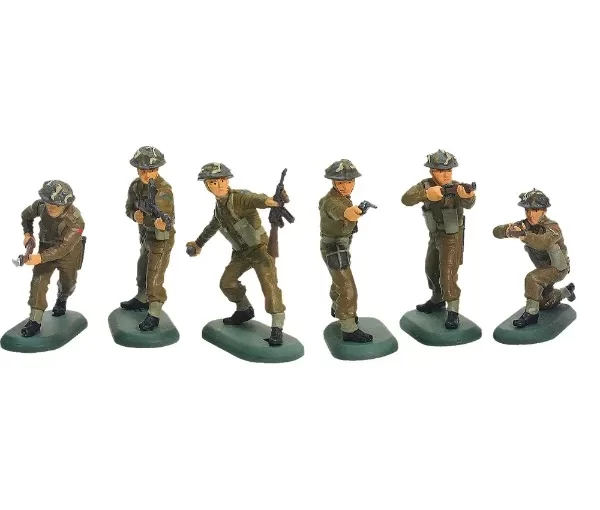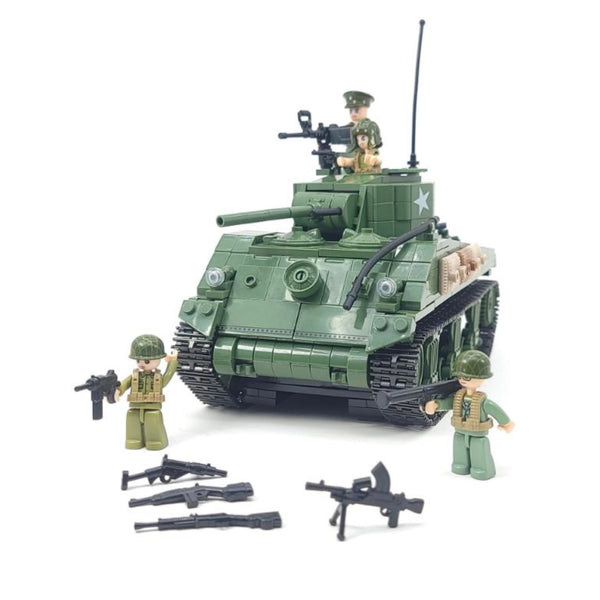Introduction
In recent years, there has been a growing interest in collecting WWII toys. These toys serve as tangible artifacts of the past, offering valuable insights into the material culture of the wartime era. Collectors appreciate their historical significance and nostalgic appeal, driving a market for rare and well-preserved WWII toys.
Despite the passage of time, WWII toys continue to captivate the imagination of both children and adults. With manufacturers reissuing classic WWII toys and museums incorporating them into their exhibits, the enduring appeal of these toys is a testament to the lasting legacy of this pivotal period in history.
Toys have always been an integral part of childhood, serving as a source of joy, imagination, and education for children of all ages. When it comes to historical significance, World War II (WWII) toys provide a unique window into the experiences of children during a tumultuous time in history. From model tanks and airplanes to board games and action figures, these toys reflect the realities and ideologies of the era. In this article, we will delve into the world of WWII toys, examining their historical context, cultural impact, and enduring appeal.
Part 1: Historical Context
WWII was a global conflict that lasted from 1939 to 1945, involving many countries and resulting in widespread devastation and loss of life. During this time, the production and distribution of toys were significantly impacted by the economic and social conditions of the war. Many materials traditionally used for toy-making, such as metal and rubber, were redirected for military use, leading to a scarcity of toys on the market. Additionally, the war effort influenced the design and themes of toys, with many manufacturers creating toys that glorified the military and promoted patriotism.
Part 2: Cultural Impact
The cultural impact of WWII toys cannot be understated, as they reflect the values, fears, and aspirations of the time. Children played with toys that mirrored the realities of war, idolizing soldiers and war heroes while learning about the global conflict through play. Moreover, toys served as a form of escapism and comfort for children during a period of uncertainty and upheaval.
Part 3: Types of WWII Toys
There was a wide variety of WWII toys available to children during this time, ranging from miniature replicas of military equipment to board games and puzzles. Model airplanes, tanks, and ships were popular among young boys, allowing them to recreate battles and engage in imaginative play. Meanwhile, board games such as “Battleship” and “Axis & Allies” provided a platform for strategic thinking and historical education.
Part 4: Collecting WWII Toys
In recent years, there has been a growing interest in collecting WWII toys among hobbyists, historians, and enthusiasts. These toys serve as tangible artifacts of the past, offering valuable insights into the material culture of the wartime era. Collectors often seek out rare and well-preserved WWII toys, appreciating their historical significance and nostalgic appeal.
Part 5: Enduring Appeal
Despite the passage of time, WWII toys continue to captivate the imagination of both children and adults. Many toy manufacturers have reissued classic WWII toys, capitalizing on their timeless appeal and historical significance. Additionally, museums and historical organizations often incorporate WWII toys into their exhibits, using them as educational tools to engage visitors and provide a tangible connection to the past.
Part 6: Ethical Considerations
As we examine the historical significance and cultural impact of WWII toys, it is essential to consider the ethical implications of glorifying war through playthings. While these toys serve as valuable historical artifacts, they also run the risk of romanticizing and normalizing the violence and trauma of war, especially for impressionable young minds. It is important to approach the study and presentation of WWII toys with sensitivity and a critical awareness of their potential influence on children’s perception of war and conflict.
Part 7: Continued Research and Scholarship
The study of WWII toys continues to be an area of ongoing research and scholarship, offering valuable insights into the material culture and social history of the wartime era. Researchers, historians, and educators are exploring the use of these toys as primary sources to understand the experiences of children during WWII and the broader societal impact of the war. By examining the design, production, and consumption of WWII toys, scholars can gain a deeper understanding of how children engaged with and were influenced by the events of the time.
Part 8: Preserving WWII Toys for Future Generations
As WWII toys become increasingly sought after by collectors and historians, there is a growing emphasis on the preservation and conservation of these artifacts for future generations. Museums, archives, and private collectors are taking steps to ensure the long-term protection and accessibility of WWII toys, recognizing their value as educational resources and historical documentation. Through proper storage, documentation, and display, these toys can continue to serve as valuable tools for learning and reflection on the impact of war on children and society.
Part 9: Educational Outreach and Engagement
In order to ensure that the historical significance of WWII toys reaches a wide audience, educational outreach and engagement initiatives are crucial. Museums, historical societies, and schools can utilize WWII toys as a means to educate and foster empathy in students. By incorporating these toys into interactive exhibits, educational programs, and lesson plans, educators can facilitate a deeper understanding of the human impact of war and promote critical thinking about the representations of conflict in popular culture.
Part 10: Reflections on Resilience and Creativity
Amidst the harrowing experiences of war, WWII toys also reflect the resilience and creativity of children and toy manufacturers during a challenging period. Despite the scarcity of resources, children found ways to engage in imaginative play and cope with the realities of war through their toys. Meanwhile, toy manufacturers displayed ingenuity by adapting their designs and materials to create toys that resonated with the wartime zeitgeist. These reflections on resilience and creativity offer a nuanced understanding of how play intersects with historical circumstances.
The exploration of WWII toys provides a multifaceted understanding of the impact of war on children, the ethical considerations of representing conflict through play, and the enduring value of these artifacts as historical and educational tools. It is through these lenses that we can appreciate the complexities and significance of WWII toys in shaping the experiences and collective memory of a generation marked by global upheaval.
Conclusion
WWII toys represent more than just playthings; they are historical artifacts that offer a glimpse into the experiences and mindset of a generation shaped by war. As we continue to study and appreciate these toys, we gain a deeper understanding of the cultural, emotional, and psychological impact of WWII on children and society as a whole. Their enduring appeal serves as a testament to the enduring legacy of this pivotal period in history.
The legacy of WWII toys extends far beyond their role as playthings; they are windows into the experiences, emotions, and cultural norms of a generation shaped by the tumultuous events of World War II. As we navigate the ethical considerations, continue scholarly research, and prioritize the preservation of these artifacts, we ensure that the lessons and insights garnered from WWII toys will endure for future generations. By examining and understanding the historical context, cultural impact, and enduring appeal of these toys, we deepen our appreciation for the significance of childhood play during times of global conflict.



